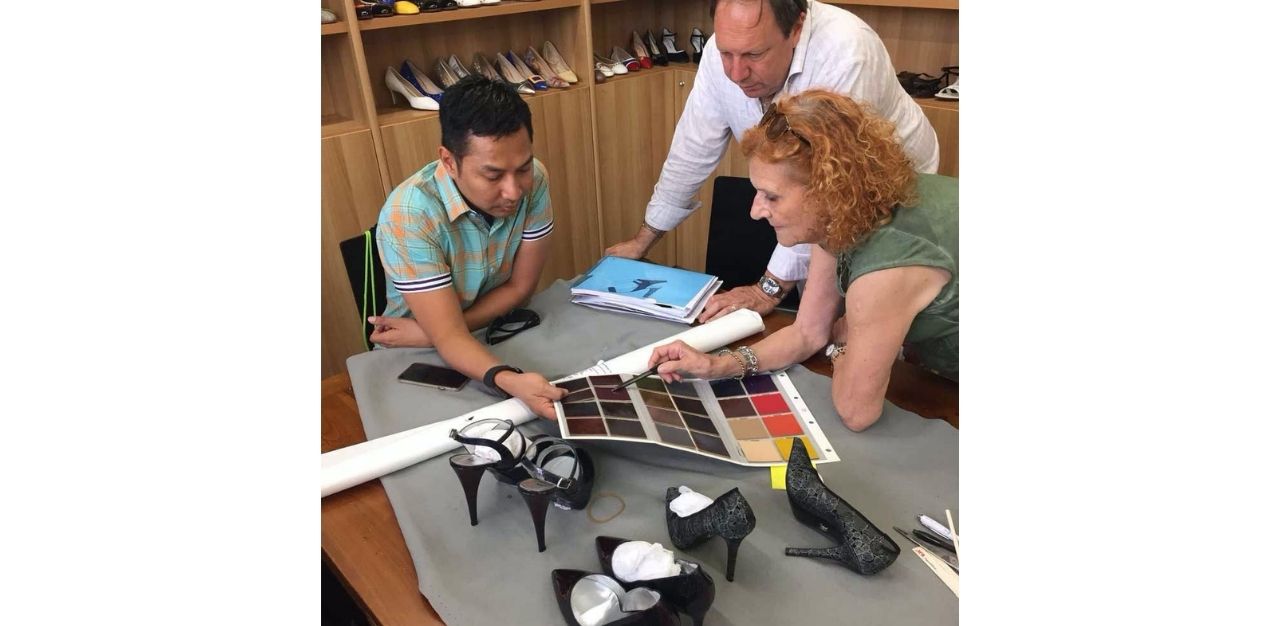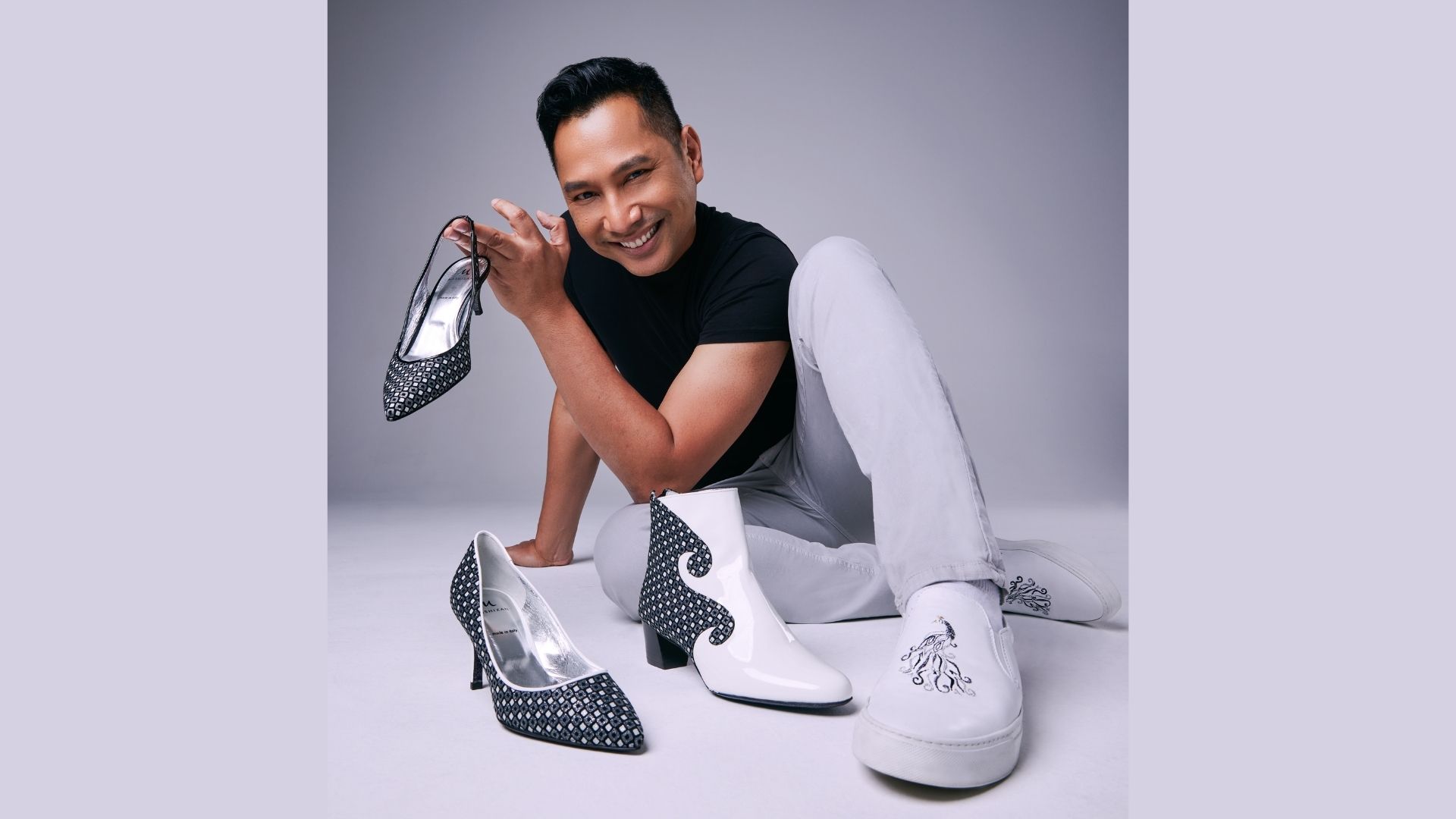Bold. Restless. Hungry.
These are words one would instantly associate with Mashizan Masjum, a Singaporean trailblazer who has braved the gruelling trials of New York and Paris in more ways than one.
Having graduated from the Wee Kim Wee School of Communications, Mr Mashizan started off as a high-flying broadcast journalist for four years with local media giant Mediacorp.
He left for New York in 2005 to pursue independent TV production. With a particular brand of bravado, and “maybe even a little bit of foolishness”, he used the savings he had and gave himself six months to make a name in the concrete jungle where dreams are made of.
After months of knocking on doors and cold calling production companies, he finally landed himself a gig producing a special about volcanoes on the History Channel, chasing down six locations around the world for his first US-based project.
“Once you get your foot in the door in New York, they will keep on hiring you,” says the dauntless personality, who went on to produce award-winning documentaries for the likes of National Geographic and Discovery channels. Mr Mashizan ended up living in New York for the next six years and spent almost two decades in the TV industry.
But that’s not all. As it turned out, Mr Mashizan had a boyhood dream of becoming a footwear designer. Always restless and on the go, he took a sabbatical to Accademia Riacci, an artisanal shoe-making workshop meant for mid-career professionals in Florence, Italy.
“I wasn’t thinking about baselines, marketing, or building a brand out of it, to be honest. I was just so driven by wanting to become an artist,” he says.
But life had different plans for him. Eight years on, his self-titled brand MASHIZAN, has a cult level following of early adopters, and his works of art have graced the like — or rather, the feet — of Solange Knowles, Sara Bareilles, and Constance Wu, among many A-list celebrities.
TheHomeGround Asia sits down with Mr Mashizan to understand the drive behind his fiery work ethic, his tribulations abroad, and how his success in both his callings are so inherently intertwined with his zest for life.
TheHomeGround Asia (THG): Did you ever foresee yourself becoming a shoe designer?
Mashizan Masjum (MM): No one in my generation ever thinks about becoming a shoe designer or international fashion designer. It’s something that you don’t do in Singapore. It’s different now because some people have done it, such as Andrew Gn in Paris. I have gone international myself. But even six to seven years ago, you wouldn’t really feel like it’s doable.
I’ve always been a trailblazer of sorts, whether it was television or fashion. I’ve always liked going to uncharted waters, doing something different and being challenged. I don’t like resting on my laurels. I don’t like being static.
I have a mole on my right ankle and my mother always nagged at me about it, saying that it’s the reason why I could never stay put. I almost feel like it’s my destiny to be part of the larger world. As much as Singapore is truly home and I love coming back to Singapore, I feel like the world is my playground.

THG: What was it like when you first left home?
MM: In your early thirties, you feel like you’re on top of the world. You can do anything. You can conquer the world and nothing can stop you. It’s a sense of uncertainty of what’s to come, yet you take it all in. So I had that kind of bravado — maybe even a bit of foolishness. I had a little bit of savings to last me in New York for six months, so I gave myself that amount of time.
The second time I left Singapore was for Florence to study design. It wasn’t really difficult because I knew it was short term. I knew I was going to come back to Singapore and continue my TV career, so it wasn’t scary to do that.
THG: What made you pursue a different career direction and stayed in shoemaking?
MM: At that point in 2013, I rose within the television industry. I was doing more bureaucratic and managerial work. This had its perks because I was being paid much more, but I was, and still am, someone who loves creative work.
So I took a break just to do something with my hands, and pursue something completely out of passion. I didn’t want it to be about a brand or a business.
But the universe had different plans for me when I came back to Singapore. Even though I continued my TV career for the next two years, I started getting a bit of traction for my first shoe collection from my early adopters. I got press coverage, so it just evolved from there.
It hasn’t been completely smooth sailing, but my experiences in New York toughened me up and made me realise that nothing in life comes easy, you have to fight for what you want. That has always been my mantra in life from the get-go.
THG: Can you tell me more about the six years that you spent in New York?
MM: New York is where everybody in the US and around the world goes to to make a name for himself or herself, so it’s a super competitive market. And furthermore, I was in a hyper-competitive industry — everybody in New York wants to become a TV writer or TV director.
Going to New York, if there was one thing I knew I could do, was that I could tell a story. That has always been something that I’m very confident of, and I was very much involved in the world of storytelling since the beginning.
I had to be very resilient and full of perseverance. The thing about New Yorkers is that you have to adopt a certain level of bravado with them — and the more “in your face” you get, the better it is. You cannot be afraid. So I was knocking on doors, and would write to production companies and say, “these are the compelling reasons why I should be hired: number one, number two, number three”.
It took me a while, but I was finally called for a series they were doing on the History Channel called Engineering and Empire, which looked at different engineering feats across civilisations. They had one episode on Chinese civilisations, so when they saw that I was from Singapore, they thought, this guy probably speaks Chinese. But when they met me and realised that I didn’t, they kept me in mind, and about two months later, they called me back. It was a special on volcanoes.
I flew around the world to six locations where there are volcanoes, and that was my first project for the US. And once you get your foot in the door in New York, and you show people that you can do the job, they will keep on hiring you. So that was how it all began.
THG: Why then did you pick shoes?
MM: Shoes, for me, have always been very beautiful to look at. They’re works of art. They give pleasure. But at the same time they can also give pain. So there’s a dichotomy in this sense that something so wonderful to look at can give you both pleasure and pain.
Many people are shoe addicts, wherein their whole mood can be lifted just by wearing the right footwear. We are on our feet all the time, and the way our shoes hold our feet can really alter our moods. Shoes are so delicate and beautiful, yet have so much power over you. That is the intellectual appeal for me: the fact that something so beautiful to look at can give you a lot of pain, if not done the right way. So that kind of intellectual approach to footwear has always been something that I’ve been fascinated by.
THG: What’s something that people do not know about what you do?
MM: People think that it’s glamorous. My Instagram shows scenes from Florence and I’m living in Paris. I travelled quite a bit before Covid and I did trunk trips to Hong Kong, London, and Monaco.
But people don’t see that I carry two or three heavy suitcases from trunk show to trunk show, up and down staircases, sweating buckets. I do it all — sometimes I get help but I’m not one to shy away from doing the heavy lifting.
THG: Was that intentional for you, building that brand loyalty?
MM: To be very honest, I had no business background. I had no idea what I was doing. I was so driven to become an artist. But as the business grew, I had no choice but to develop those skills.
Trained as a journalist — we are generalists — I’m very good at research. You give us an assignment and we do our research thoroughly. That was the approach I took with my shoe business. I did what I could to learn on the ground. I learned on the job and mastered the skills along the way.
I’ve actually just finished my executive MBA at Institut Francais de la Mode, which is a prestigious fashion school in Paris. I took it in French. It was another challenge that I gave myself. I thought it was good to be part of the Paris fashion scene, and what better way than through school, right?
THG: What are some of the transferable skills that you pushed forward from TV to designing?
MM: I know how to engage people through storytelling, for one. I’m quite comfortable with talking to the media, whether it’s television or public speaking. As a journalist, you also have to listen to people — it’s not just asking questions, but you really have to concentrate and make sure your mind is not straying. After doing that for almost 20 years, I can now engage with my clients and hear their needs. Those are skills that I think I’ve acquired over my decades in the television industry.
THG: Why do you think your brand has such a loyal following?
MM: For me, what’s important is that when you communicate, you have to do so with authenticity. It’s such a big part of the new generations’ ideals — you have to speak your truth, your realness. This is as opposed to other bigger brands, where the image is all about the beautiful side of things. Sometimes, people appreciate the hardship that you encounter and it makes the beautiful things even more beautiful to look at because they’ve understood the challenges that you’ve encountered in achieving them.
THG: What would you like to tell budding designers or TV journalists in Singapore?
MM: It’s very important to be bold and unafraid. The young people in New York, China, and even Vietnam are super hungry and driven. I think we need to have that sense of drive and hunger ingrained in the youth of Singapore. If you’re not hungry in your early 20s, how then do you maintain your drive and resilience in your 40s and 50s?
Join the conversations on TheHomeGround Asia’s Facebook and Instagram, and get the latest updates via Telegram.





























